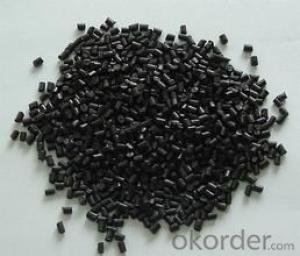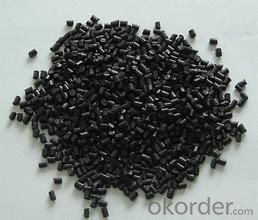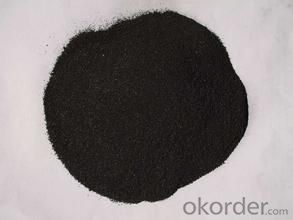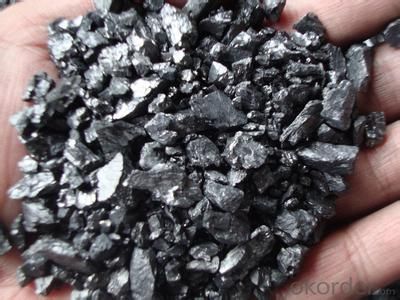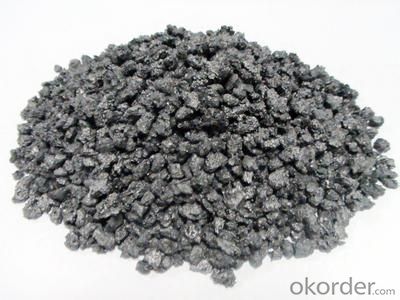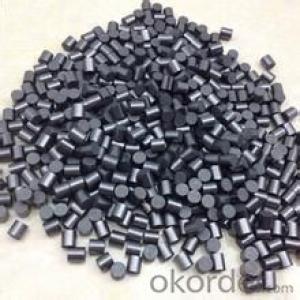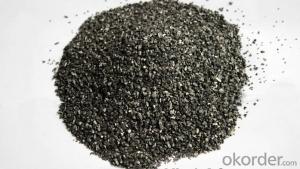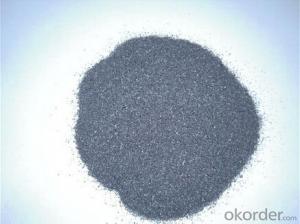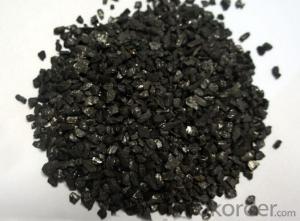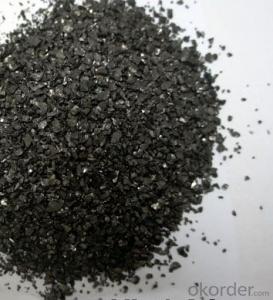90% 92% 93% 94% 95% Recarburizer Recarburizer Carbon addtive Carbide Recarburizer Carburant
- Loading Port:
- Qingdao
- Payment Terms:
- TT OR LC
- Min Order Qty:
- 500 kg
- Supply Capability:
- 30000000 kg/month
OKorder Service Pledge
OKorder Financial Service
You Might Also Like
Specification:
- Professional Manufacturer
- Low Sulphur Content
- High Absorption Rate
Professional Manufacturer
As an ideal carbon additive and intermediate reactor, our recarburizer has been widely used in different industries like metallurgy, chemistry, machinery, electricity, etc. We can make different sizes and grades of recarburizer to meet your special needs.
As one of the leading companies in this field, we have a number of independent intellectual property rights and strong R & D capabilities. Our business ranging from the production of graphite material to precision machining of graphite parts and graphite molds.
Our recarburizer has the features of high carbon, low sulphur, nitrogen and harmful impurities. So it has been widely used for steel-smelting, casting, brake pedal and friction material. | |||||
Product Specification | |||||
Product No. | Fixed Carbon (Min) | Sulphur | Ash | V.M | Moisture |
Max | Max | Max | Max | ||
DT-CA-01 | 97.00% | 0.50% | 1.50% | 1.50% | 0.50% |
DT-CA-02 | 98.50% | 0.50% | 0.80% | 0.80% | 0.50% |
DT-CA-03 | 98.50% | 0.50% | 0.80% | 0.80% | 0.50% |
DT-CA-04 | 98.50% | 0.50% | 0.50% | 0.50% | 0.50% |
DT-CA-05 | 98.50% | 0.35% | 0.80% | 0.80% | 0.50% |
DT-CA-06 | 98.50% | 0.35% | 0.50% | 0.50% | 0.50% |
DT-CA-07 | 99.00% | 0.35% | 0.50% | 0.50% | 0.50% |
DT-CA-08 | 97% | 0.05% | 1.50% | 1.50% | 0.50% |
DT-CA-09 | 98.50% | 0.05% | 0.80% | 0.70% | 0.50% |
DT-CA-10 | 95% | 0.30% | 3.50% | 1.50% | 0.50% |
DT-CA-11 | 99% | 0.03% | 0.50% | 0.50% | 0.50% |
Remark:The above mentioned grain sizes are recommended standard, if your have special requirements, please feel free to contact us. | |||||
Consistent Quality Control
The whole management process is strictly complied with the ISO9001-2000 quality management system. our recarburizer has earned its reputation for exceptional carbon absorption performance and is welcomed by global customers from Japan, USA, Korea, Europe etc.
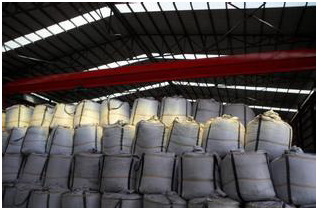
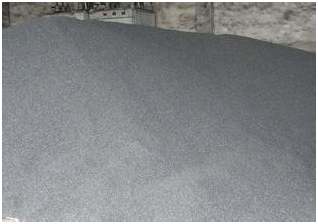
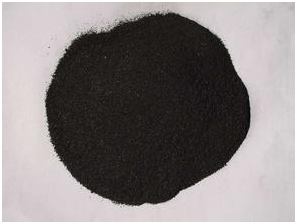
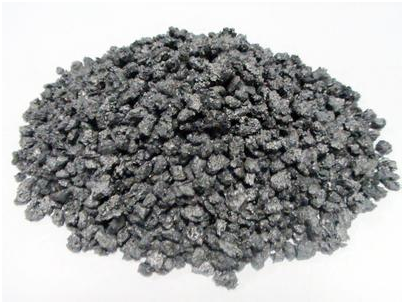
- Q: What are the effects of carbon emissions on the stability of volcanic regions?
- The stability of volcanic regions can be influenced by both direct and indirect effects of carbon emissions. At first glance, the direct impact of carbon emissions on volcanic areas seems relatively insignificant. Volcanic eruptions naturally release carbon dioxide (CO2), so the additional emissions from human activities may not have a significant individual effect on the stability of volcanic regions. However, the increased levels of carbon dioxide in the atmosphere can contribute to climate change, which can indirectly affect volcanic activity. Indirectly, the stability of volcanic regions can be affected by climate change resulting from carbon emissions. The rising global temperatures caused by climate change can lead to the melting of glaciers and ice caps. This, in turn, increases the amount of water on the Earth's surface. The additional weight of water in volcanic areas can potentially add pressure to magma chambers and trigger volcanic activity. Moreover, the increased water levels can result in higher levels of rainfall, which increases the risk of landslides and erosion in volcanic regions, potentially destabilizing the area. Additionally, climate change can alter precipitation patterns and create drought conditions, impacting the hydrological cycle. These changes can affect the availability of water for volcanic regions, ultimately influencing their stability. Volcanoes require water for the production of steam and pressure that can lead to eruptions. If there is a lack of water due to prolonged drought conditions, volcanic activity may decrease. However, unpredictable rainfall patterns can result in an excess of water, leading to an increased risk of flash floods and landslides that can destabilize volcanic areas. It is important to acknowledge that the effects of carbon emissions on the stability of volcanic regions are intricate and can vary based on factors such as local geology, volcanic activity, and climate conditions. Although carbon emissions may not directly cause volcanic eruptions, they can contribute to changes in climate patterns that can indirectly impact the stability of volcanic systems. Further research and monitoring are necessary to fully comprehend and quantify these effects.
- Q: Why is the solubility of carbon in austenite larger than that in ferrite?
- Its properties are similar to that of pure iron, and its plasticity and toughness are good, and its strength and hardness are low. It is usually massive or flaky in steel.The austenite structure is a face centered cubic lattice with a gap radius (0.414~0.225). Because of the larger size of the lattice gap, the solubility of carbon in gamma -Fe is relatively large. It has good plasticity.
- Q: What are fullerenes?
- Fullerenes are a class of carbon molecules that have a unique structure resembling hollow spheres, tubes, or other shapes. They are made entirely of carbon atoms, forming a cage-like structure. Fullerenes can have different sizes and arrangements of carbon atoms, with the most famous one being the buckyball, consisting of 60 carbon atoms arranged in a soccer ball-like shape. These molecules have various applications in technology, medicine, and materials science due to their exceptional physical and chemical properties.
- Q: Why vegetarianism can reduce carbon emissions?
- That is to say, when the level of the food chain is more, the carbon emissions are more natural; while the human eating vegetarian diet is the shortest food chain, which has the least carbon emissions
- Q: What is the symbol for carbon?
- "C" is the symbol representing carbon.
- Q: What is carbon black filler?
- Carbon black filler is a type of material made from fine particles of carbon that is added to various products, such as rubber, plastics, and inks, to improve their strength, durability, and color.
- Q: How does carbon impact the stability of savannah ecosystems?
- Carbon plays a crucial role in the stability of savannah ecosystems. It is an essential element for all living organisms and is involved in various ecological processes. Carbon is primarily present in the form of organic matter, which is vital for the growth and development of plants, the primary producers in these ecosystems. In savannahs, carbon impacts stability in multiple ways. Firstly, carbon dioxide (CO2) is a key component of the Earth's atmosphere and plays a significant role in regulating the global climate. Savannas are known for their ability to sequester and store large amounts of carbon in their vegetation and soils. This carbon storage helps mitigate climate change by reducing the amount of CO2 in the atmosphere. Furthermore, carbon is essential for plant growth through photosynthesis. Savanna plants, such as grasses and scattered trees, utilize carbon dioxide from the air, converting it into carbohydrates and other organic compounds. This process not only provides plants with energy but also contributes to the overall productivity of the ecosystem. The stability of savannah ecosystems also depends on the interaction between plants and animals. Carbon-rich vegetation serves as a food source for herbivores, such as zebras and antelopes, which in turn support predators like lions and hyenas. The carbon cycle ensures a continuous flow of energy and nutrients throughout the food web, maintaining the balance and stability of the ecosystem. Moreover, the carbon content in savannah soils influences their fertility and ability to retain moisture. Organic matter, derived from decaying plant material, improves soil structure, nutrient availability, and water holding capacity. This, in turn, supports the growth of vegetation and sustains the diverse array of species found in savannah ecosystems. However, human activities, such as deforestation, agricultural practices, and the burning of fossil fuels, are altering the carbon balance in savannahs. Deforestation removes carbon-rich trees and plants, reducing the overall carbon storage capacity of the ecosystem. Additionally, the release of carbon dioxide from the burning of fossil fuels contributes to the greenhouse effect and climate change, which can disrupt the stability of savannah ecosystems. In conclusion, carbon plays a critical role in maintaining the stability of savannah ecosystems. It influences climate regulation, supports plant growth, provides energy for the food web, and enhances soil fertility. However, human activities that disrupt the carbon balance in these ecosystems can have detrimental effects on their stability and overall health. Therefore, efforts to conserve and restore savannah ecosystems are essential for preserving their carbon storage capacity and ensuring their long-term stability.
- Q: What role does carbon play in the carbon cycle?
- The carbon cycle relies heavily on carbon as it circulates through different parts of the Earth. Carbon can be found in both organic and inorganic forms and moves between the atmosphere, oceans, land, and living organisms. This complex cycle involves several interconnected processes, including photosynthesis, respiration, decomposition, and combustion. In the atmosphere, carbon is primarily in the form of carbon dioxide (CO2) gas, which is essential for photosynthesis. During this process, green plants and algae absorb CO2 and convert it into organic compounds like glucose, releasing oxygen as a byproduct. This helps regulate the amount of carbon dioxide in the atmosphere and forms the basis of the food chain. Living organisms break down organic compounds through respiration, releasing energy and producing carbon dioxide as waste. Plants can then immediately reuse this carbon dioxide during photosynthesis, completing the cycle. Additionally, when organisms die, decomposers like bacteria and fungi break down their remains, releasing carbon dioxide back into the atmosphere. The carbon cycle also involves the exchange of carbon with the oceans. Carbon dioxide dissolves in seawater and can be absorbed by marine organisms, such as phytoplankton and corals, during photosynthesis. Over time, the remains of these organisms sink to the ocean floor and can become trapped in sediments, forming fossil fuels like coal, oil, and natural gas. Through geological processes, these fossil fuels can be released back into the atmosphere when burned, contributing to increased carbon dioxide levels. Human activities, like burning fossil fuels and deforestation, have had a significant impact on the carbon cycle. Excessive carbon dioxide emissions from these activities have disrupted the cycle, leading to higher concentrations of carbon dioxide in the atmosphere and contributing to global climate change. In summary, carbon is crucial in the carbon cycle as it is the foundation of life and moves through various parts of the Earth, regulating the climate and supporting life on our planet.
- Q: How is carbon used in water filtration systems?
- Carbon is used in water filtration systems as a filter medium or adsorbent. It effectively removes impurities, such as chlorine, volatile organic compounds (VOCs), and other contaminants, by adsorbing them onto its porous surface. This process helps improve the taste, odor, and overall quality of drinking water.
Send your message to us
90% 92% 93% 94% 95% Recarburizer Recarburizer Carbon addtive Carbide Recarburizer Carburant
- Loading Port:
- Qingdao
- Payment Terms:
- TT OR LC
- Min Order Qty:
- 500 kg
- Supply Capability:
- 30000000 kg/month
OKorder Service Pledge
OKorder Financial Service
Similar products
Hot products
Hot Searches
